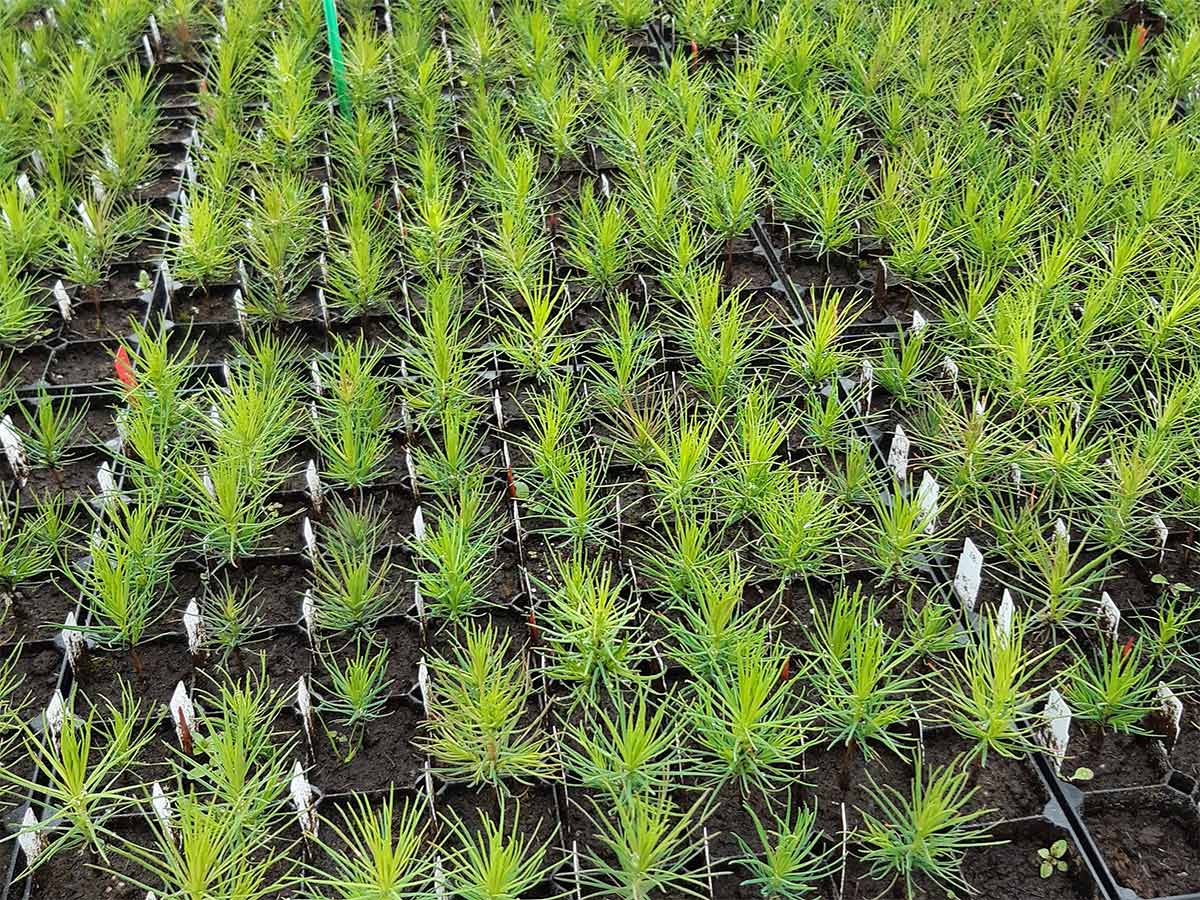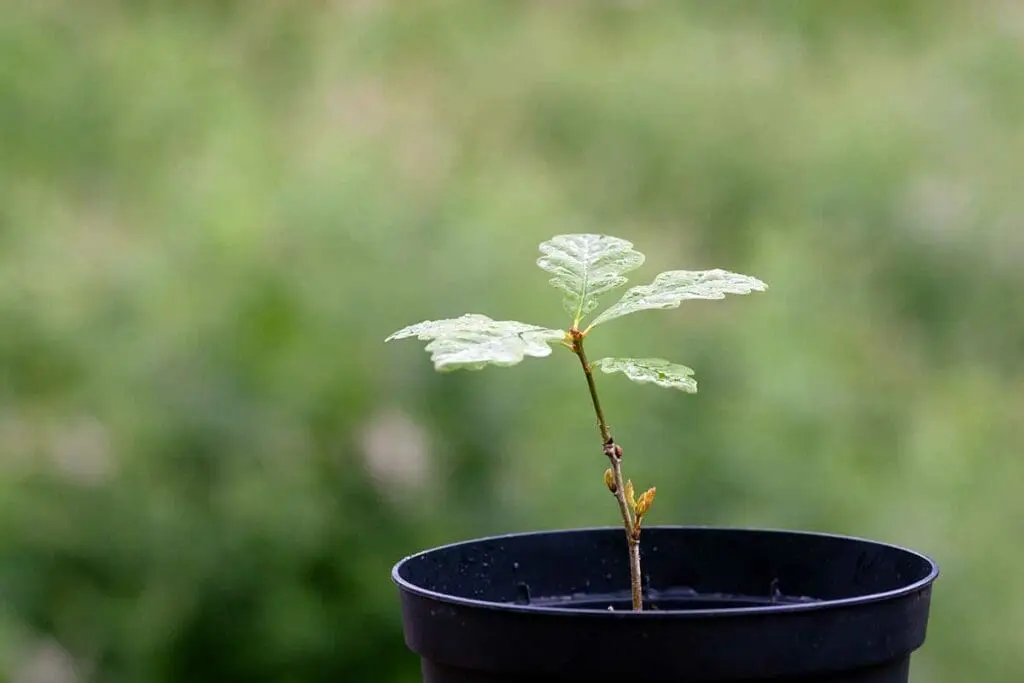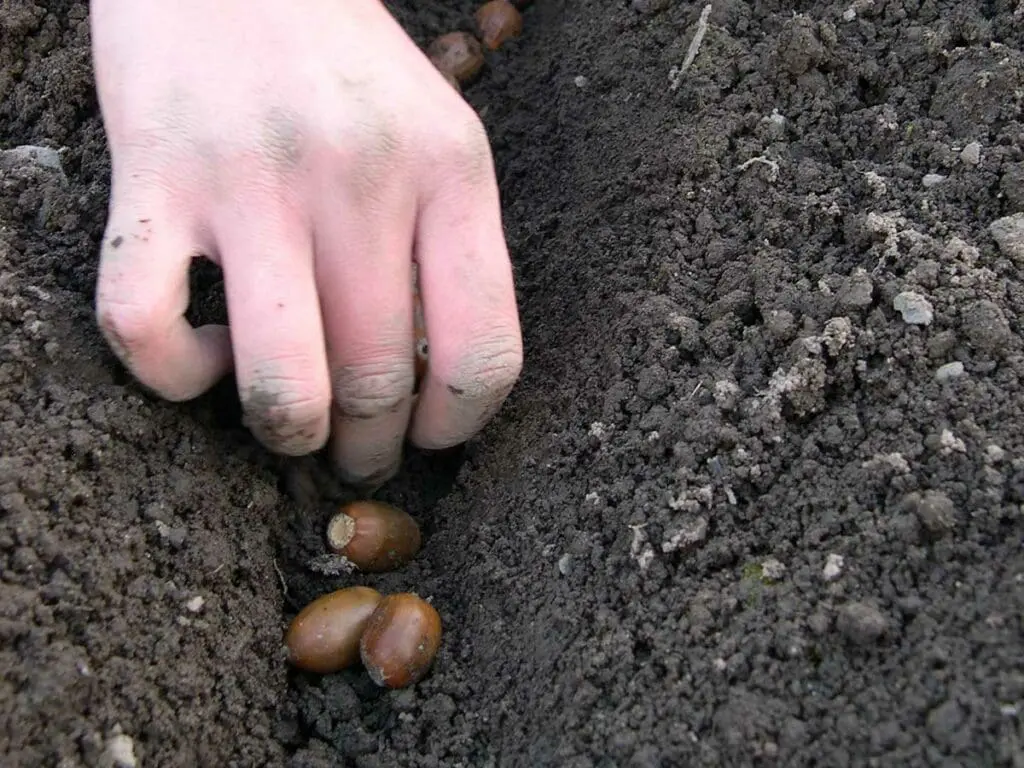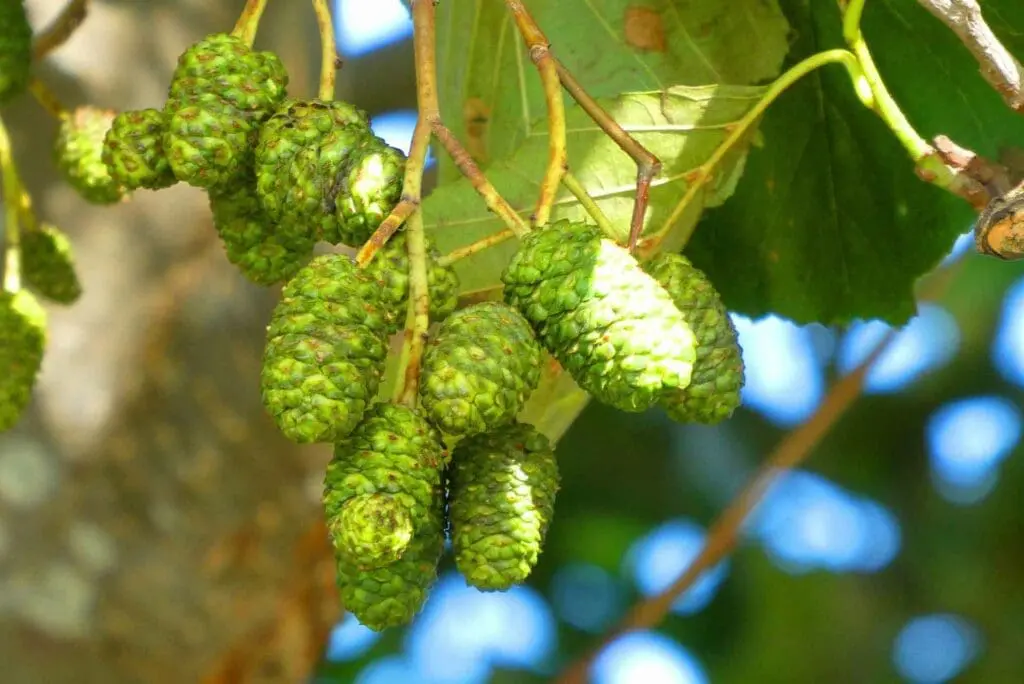Once our seeds have germinated they are reliant on us to ensure a steady supply of water and food. We must also keep them free from weed competition and any pests and diseases that may threaten their growth.
Position
Our native trees do not like high temperatures, but they will benefit from a certain amount of protection from the elements. If grown in containers, this can be achieved by placing the pots on a windowsill, in a polytunnel or another such place. Wherever they are though, please ensure that they receive plenty of bright light. Otherwise they will grow weak and spindly. If they are grown in seedbeds, there is no option but to grow them outside, unless you are lucky enough to have a greenhouse or polytunnel.
Watering
Too much water can be as damaging as too little to our young trees, especially to those grown in containers. Obviously, we have less control over the amount of water our trees receive outside and we must hope that Mother Nature sends us just about the amount we would ask. We can add extra when she doesn’t send enough, but must hope that our soil is well-drained enough to cope with those times when she is a little ‘over generous’.
Weeding
Competition from weeds can seriously reduce the growth of our trees. Weed growth in containers can be kept to a minimum if sterile compost is used, but take care to remove any weeds that do appear! They will grow very quickly, especially when the pots are undercover. Weed growth outside will be slower, but they will inevitably overtake and possibly smother our trees if they are given the chance. Weeds are best carefully removed when they are very small. This will cause the minimum disturbance to the trees’ delicate roots.
Feeding
The photograph on the right shows, quite starkly, the difference between young hawthorn seedlings that are short of food (on the left) and those that are well-fed (on the right) – and these are real photographs! Plant nutrients in the soil can quickly ‘leach’ with heavy rain leaving plants short of food. While they may recover as their roots develop, they will have suffered a setback for that year, resulting in smaller seedlings.
The best way to feed plants is to do it indirectly by feeding the soil. Due to leaching or a high demand from many seedlings, this may not always be adequate. As a supplement there are many proprietary brands of fertilizer available, organic and inorganic. Our trees require a well-balanced fertilizer to be applied little and often (perhaps every 4-6 weeks). This may be in the form of a liquid feed (particularly good for containers) or granular, which will leach more slowly. Never apply more than is recommended as this can damage the plants’ roots and have an adverse effect on our environment.
Pests and diseases
Perhaps the biggest threat to the health of our young trees is that from pests and diseases. These can strike at any time – from before seed germination all the way through to mature plant. The amount of damage they will do generally depends on the overall health of the plants being attacked. A healthy plant can resist pests and diseases far better than an unhealthy one.
The main pests and diseases that we come across on trees are:
- Mildew on oak, hawthorn, purging buckthorn and crab apple
- Rust on birch
- Blackfly on wild cherry
- Scab on rowan
How we treat pests and diseases will depend on our general approach to gardening. Organic gardeners will have fewer methods of control at their disposal than do gardeners who are prepared to use pesticides. Garden centres should stock a range of treatments, both organic or otherwise, that we can use once we have identified the problem. But, keep your eyes wide open! The earlier we spot any kind of problem, the earlier we can treat it and the more effective the treatment will be. Check out the Garden Organic for organic solutions.
After one full growing season, your trees should have reached between 20cm and 1m in height depending on your feeding, weeding and watering.
They are now ready to be dug up and transplanted, either to their final home or for another year of growth before being planted out.
Transplanting
When to dig your trees up
Once the leaves have turned colour in the autumn, usually around the end of October, we can begin to dig up our trees.
Great care must be taken to prevent damage to both the stems and the roots whilst they are being moved. Drying of the roots must be avoided at all costs.
How to dig your trees up
Using a garden spade or fork, carefully ease the trees out of the ground. Do not insert the spade too close to the roots as it may cause damage. Only pull the trees gently – they mustn’t be forced out – after the soil has been sufficiently loosened.
The trees should be separated into different sizes if they are destined to be transplanted for a further year. This means that the taller trees won’t be overshadowing the smaller trees. Use bags to store the trees temporarily and to keep their roots away from the sun or drying winds – it may only take a few minutes before any drying becomes damaging.
Storing
For short-term storage plastic bags are fine. Tie them at the top to seal in moisture and the trees will be okay for a few days.
If you need to store them for any longer, they should be ‘heeled-in’. This means simply covering the roots with soil or sand to keep them moist, using your heel to gently firm them in. Trees can be kept like this until they begin to grow again.
Transplanting
Those trees that are too small to plant into their final home will need another year of growth. They can be transplanted to give them more space (about 10-15cm between plants).
Standing on a board to prevent soil compaction, make a v-shape by inserting a sharp spade to its full depth and pushing it forward slightly. This allows the roots of the tree to fit between the back of the spade blade and the soil. Make sure the roots are pointing downwards and outwards.
Remove the spade and firm with the foot, ensuring the tree is upright and at the same depth as it was growing before.
Containers
If you need to re-pot your trees in containers, this is best carried out during the late-autumn or early-spring.
Part-fill a larger container with a small amount of compost. Remove the tree gently from its old pot (tapping the pot at its edge might help loosen it) and sit the rootball on top of the compost in the new pot.
Fill in around the edges with fresh compost, ensuring the tree is at the same depth as previously. Firm with your fingers, water well and feed regularly throughout the growing season.




